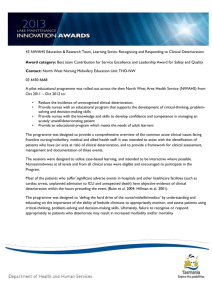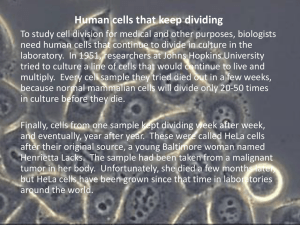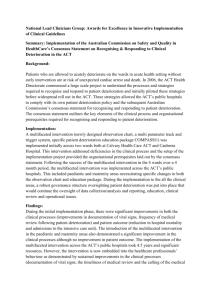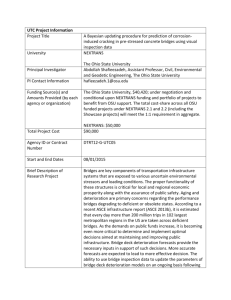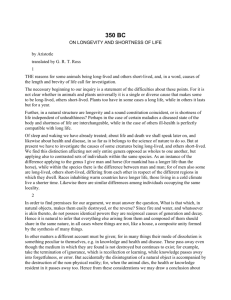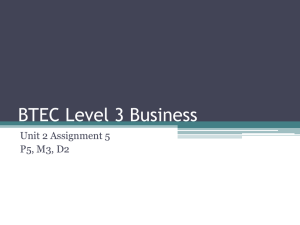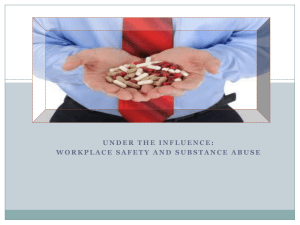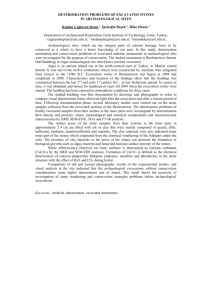Fair Value
advertisement
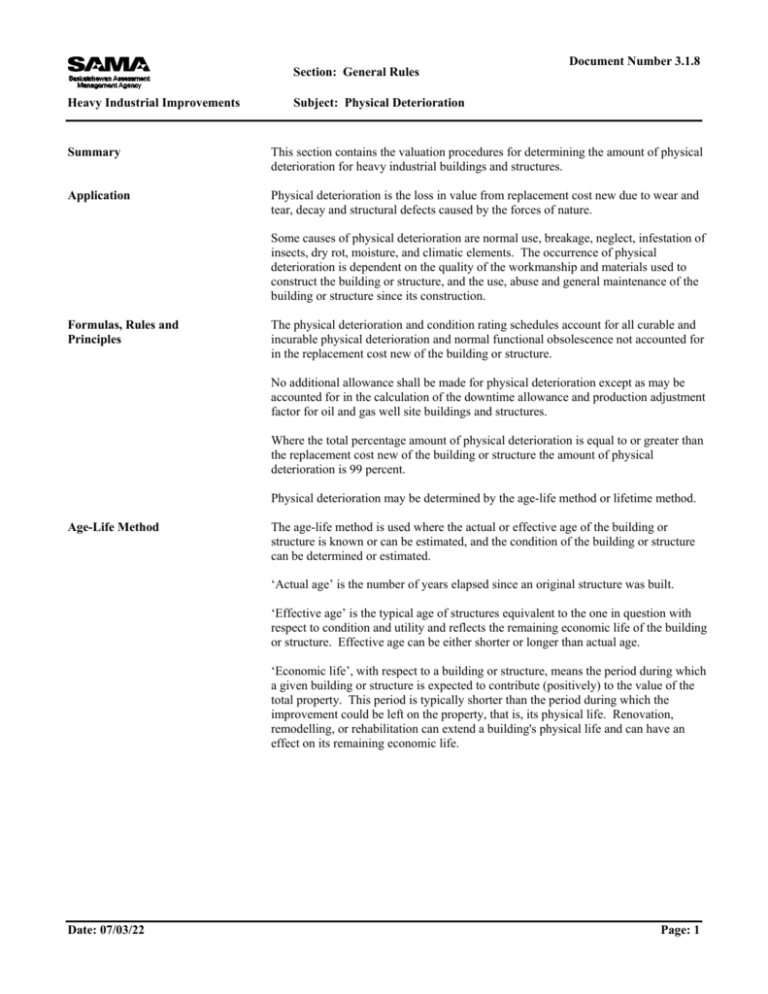
Section: General Rules Heavy Industrial Improvements Document Number 3.1.8 Subject: Physical Deterioration Summary This section contains the valuation procedures for determining the amount of physical deterioration for heavy industrial buildings and structures. Application Physical deterioration is the loss in value from replacement cost new due to wear and tear, decay and structural defects caused by the forces of nature. Some causes of physical deterioration are normal use, breakage, neglect, infestation of insects, dry rot, moisture, and climatic elements. The occurrence of physical deterioration is dependent on the quality of the workmanship and materials used to construct the building or structure, and the use, abuse and general maintenance of the building or structure since its construction. Formulas, Rules and Principles The physical deterioration and condition rating schedules account for all curable and incurable physical deterioration and normal functional obsolescence not accounted for in the replacement cost new of the building or structure. No additional allowance shall be made for physical deterioration except as may be accounted for in the calculation of the downtime allowance and production adjustment factor for oil and gas well site buildings and structures. Where the total percentage amount of physical deterioration is equal to or greater than the replacement cost new of the building or structure the amount of physical deterioration is 99 percent. Physical deterioration may be determined by the age-life method or lifetime method. Age-Life Method The age-life method is used where the actual or effective age of the building or structure is known or can be estimated, and the condition of the building or structure can be determined or estimated. ‘Actual age’ is the number of years elapsed since an original structure was built. ‘Effective age’ is the typical age of structures equivalent to the one in question with respect to condition and utility and reflects the remaining economic life of the building or structure. Effective age can be either shorter or longer than actual age. ‘Economic life’, with respect to a building or structure, means the period during which a given building or structure is expected to contribute (positively) to the value of the total property. This period is typically shorter than the period during which the improvement could be left on the property, that is, its physical life. Renovation, remodelling, or rehabilitation can extend a building's physical life and can have an effect on its remaining economic life. Date: 07/03/22 Page: 1 Section: General Rules Heavy Industrial Improvements Document Number 3.1.8 Subject: Physical Deterioration The amount of physical deterioration is determined by application of the following calculation procedure: 1. Determine the normal life expectancy for the class and type of building or structure; 2. Determine the effective age and the percentage amount of deterioration for the class and type of building or structure using the physical deterioration schedules; 3. Determine the condition and condition factor using the condition rating schedule; and 4. Calculate the total percentage amount of physical deterioration by multiplying the amount of physical deterioration from the physical deterioration schedule by the condition factor from the condition rating schedule. Date: 08/05/22 Page: 2 Section: General Rules Heavy Industrial Improvements Lifetime Method Document Number 3.1.8 Subject: Physical Deterioration The lifetime method is used for the following heavy industrial buildings and structures: Non-standard heavy industrial buildings and structures: • Saskatchewan Assessment Manual (2006 Base Year) o Oil & Gas Well Tanks (S880) o Oil & Gas Well Buildings (S881) o Utility Tunnel (S932) Physical Deterioration Schedule • SAMA’s 2006 Cost Guide o Chapter 7: Commercial Tanks and Reservoirs o Commercial Cylindrical Bin (S840) o Commercial Hopper Bin (S841) o Utility Bin (S842) o Utility Hopper Bin (S843) o Stacks (S852) o Incinerators (S853) o Mill Incinerator (S854) o Brick Incinerator (S855) o Towers (S860) o Guyed Towers (S861) • Marshall Valuation Service o Farm Storage: Section 17, pages 54 to 55 o Tanks: Section 61 o Miscellaneous Industrial Costs: Section 62 The amount of physical deterioration by the lifetime method for specified commercial buildings and structures is 40 percent. The condition rating is 1.0. Use the physical deterioration schedule in the Marshall and Swift Valuation Service Section 97, Depreciation – Commercial Properties dated February 2006. Properties built in 2006 or newer are assigned an effective age of ‘0’. Condition Rating Schedule The condition of buildings and structures is determined by taking into consideration the remaining economic life of both short-lived and long-lived items. Short-lived items have a shorter life than the basic structure, for example roofing, interior finish, floor coverings, heating system and plumbing fixtures. Long-lived items are in the basic structure of the building and are not usually replaced during the economic life of the building. Long-lived items include such things as the foundation, frame, floor and roof structure, piping, heat ducts, insulation and electrical wiring. Date: 08/05/22 Page: 3 Document Number 3.1.8 Section: General Rules Heavy Industrial Improvements Subject: Physical Deterioration The condition factor for heavy industrial buildings and structures is determined by application of the following condition rating schedule: Condition Rating Description Condition Factor Remodelling: Extensive remodelling has occurred in recent years. No functional inadequacies of any consequence. Excellent (EX) Long-lived items: Long-lived items have had good maintenance, remodelling, or renovation where necessary. Maintenance: Above normal regular general maintenance has occurred. All items that can normally be repaired or refinished have recently been corrected. 0.5 Short-lived items: All major short-lived items are in like-new condition. Remodelling: Some remodelling has occurred in recent years. Little evidence of functional obsolescence and a high degree of utility. Superior (SUP) Long-lived items: Long-lived items have had good maintenance, remodelling or renovation where necessary. 0.6 Maintenance: Above normal regular general maintenance has occurred. Short-lived items: Most major short-lived items are in likenew condition. Remodelling: Some remodelling has occurred since construction of the original building. Little evidence of functional obsolescence and a high degree of utility. Very Good (VG) Long-lived items: Long-lived items have been repaired where necessary. No visible evidence of deterioration. Maintenance: Normal regular general maintenance has occurred. Many items have been overhauled and repaired as they’ve shown signs of wear. 0.7 Short-lived items: Many of the major short-lived items are in like-new condition, while others are well maintained and some may require minor repair. Remodelling: Utility is above the standard. Long-lived items: Long-lived items have been repaired where necessary. Good (G) Maintenance: Normal regular general maintenance has occurred. No obvious maintenance required. 0.8 Short-lived items: A few major short-lived items are in likenew condition, while others are well maintained and some may require minor repair. Date: 07/03/22 Page: 4 Document Number 3.1.8 Section: General Rules Heavy Industrial Improvements Subject: Physical Deterioration Condition Rating Description Condition Factor Remodelling: Building is substantially in its original state. Above Average (AA or A/AV) Long-lived items: Most long-lived items have been repaired where necessary. 0.9 Maintenance: Normal regular general maintenance has occurred. Short-lived items: A few major short-lived items are in like-new condition, while others are well maintained and some may require minor repair. Irrespective of the following description, new or recently built buildings are considered to be in average condition. Remodelling: Building is substantially in its original state. Utility is standard for properties with a similar class and usage. Average (A, AV or AVE) Long-lived items: Most long-lived items have been repaired where necessary. 1.0 Maintenance: Normal regular general maintenance has occurred. May have some evidence of deferred maintenance as a few minor repairs and refinishing are needed. Short-lived items: A few major short-lived items may require repair or replacement, while others will not require replacement in the short term. Remodelling: Building is substantially in its original state. Inadequate building utility and services. Below Average (Badly Worn) (BA or B/AV) Long-lived items: Lack of maintenance of long-lived items has resulted in structural decay and defects. 1.15 Maintenance: Deferred general maintenance is apparent. Much repair is needed. Short-lived items: Some major short-lived items require repair or replacement, while others show noticeable wear. Poor Remodelling: Building is substantially in its original state. Usually contains numerous functional inadequacies. (Worn Out) (P) Long-lived items: Lack of maintenance of long-lived items has resulted in structural decay and defects that cannot be economically repaired. 1.3 Maintenance: General maintenance has been neglected. Short-lived items: Most short-lived items need major repairs or replacement. Date: 07/03/22 Page: 5
